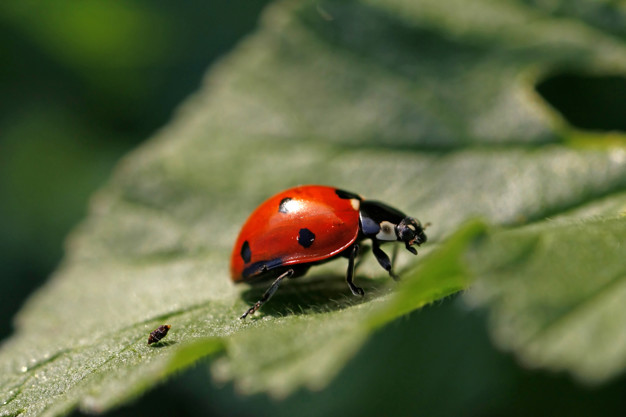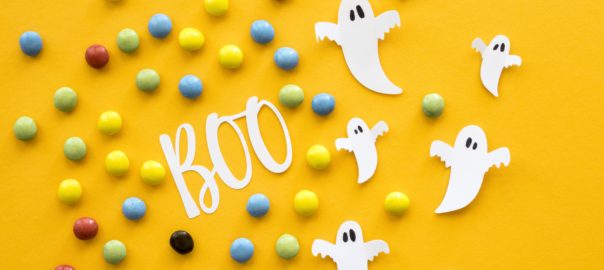With Halloween just around the corner, there will be a huge assortment of candy going into goody bags and candy dishes all over the country.
Candy corn, malted milk balls, milk duds, jelly beans, chocolate covered nuts and fruits, and more are all part of the holiday festivities.
In addition to the potential for artificial colors and chemical additives, these treats also come with a little something extra. A “natural” ingredient that falls into the GRAS (General Recognized As Safe) category — Shellac.
In the interest of helping you to understand what's really in your food, I wanted to explain exactly what shellac is and where it comes from.
Most of us tend the think of shellac as something found in furniture polish. It can also be found in personal care products such as hairspray or shampoo, in cosmetics like mascara, or even in perfumes. Shellac also has the potential to be used in dentures.
It also appears in the above-mentioned foods as well as some others. Sometimes hidden on the label (because food manufacturers would prefer that you not know what's in your food) it may be referred to as “confectioner's glaze,” “confectioner's resin,” “candy glaze,” or even simply “natural glaze.”
So what is shellac? It's essentially the insect version of castoreum*. Harvested from trees where the female lac bug lays down cocoon-like secretions, it is scraped off the trees (often along with bark and insect parts) and heated until it liquifies.

It's strained and then allowed to cool in thin sheets. This is then reconstituted with denatured alcohol when manufacturers are ready to use it to give foods that shiny coating. Because these secretions, or resin, are not harvested until after the female has died (according to web research) The Vegetarian Society has determined that it is a vegetarian product. Vegans, on the other hand, do not consider it to be an acceptable food-product because it is produced by an insect.
Other food-grade uses for shellac include the coating found on some pharmaceuticals and supplements. A coating of shellac can be used to create the enteric coating on pills. Another use includes adding the shine back to apples in order to replace the natural wax coating lost when the fruit is cleaned before shipping.
Although research reveals that some people may suffer from allergic dermatitis from contact with shellac, there appear to be no other highly significant health issues, but rather a strong, “ick” factor. There is a vegetable alternative to shellac. It is called zein and is a corn-based protein. It is important to note that in order for this to be an acceptable solution it would need to be from organic corn as most corn is highly contaminated with GMOs. Zein can be hard to identify on the label as it is also frequently referred to as “confectioner's glaze.”
If eating shellac (and potential bug parts) is a concern for you I suggest you contact the manufacturer of any product with confectioner's glaze, confectioner's resin, candy glaze, or natural glaze on the label to identify its origin.
*I refer to this item as “beaver butt.” It's the anal gland secretion of beavers, used to flavor foods with vanilla, raspberry or strawberry flavoring. However, on the label, it always appears under the term “natural flavor.”



Exactly why I’m a fan of whole, unprocessed foods and rarely eat candy. YIKES.
Your article has me rethinking the options at my home bar.
A few cans of paint and some shellac will need to be available from now on.
I’ve often wondered that myself. All of these strange substances in our food…who came up with that? And who agreed with them once they shared their “discovery?”
As if shellac in my candy didn’t gross me out enough you had to go and add Beaver Butt. I may never eat anything again that isn’t grown in my backyard… I think I need a bigger back yard!
Hi Trudy, Good point. Anything which impacts the body so negatively can have an effect on mood. The food-mood connection is more powerful that most people realize. Luckily we have your excellent book to help us understand this better.
Hi Heidi, Unfortunately the term “natural’ is used to hide a wide variety of things that manufacturers would rather we not know about. “Natural flavors” are not always a bad thing but when they use that catchall term I get a little suspicious and try to avoid it as much as I can.
Hi Sue, yes it’s rather off-putting. Honestly compels me to share that I have not found any ill effects from eating castoreum, but it certainly is not something that I keep (or want) in my pantry.
Yes, big Ick factor here. What I’m wondering is who the heck thought about even trying Bug secretions or Beaver Butt. “Hmmm, this might be an interesting flavor to put on my food.” ???
What’s wrong with these people and their ideas!!!
Yes, there is a very big “ick” factor here! But more disturbing, is the fact that ingredients like this and others are hidden from us with false and incomplete labeling. I’m so pleased you are keeping tabs on this and keeping us informed!
You mention dermatitis research and this makes me think inflammation and stress on the adrenals…and hence a possible impact on anxiety and depression.
Well, I guess the anal secretion of a beaver is “natural” OK, just not sure I want to eat it. 🙂
Holy smokes not the kind of “natural flavours” we want to be consuming!!
When I think of shellac I think of polished ladies nails and definitely nothing I want to be eating!